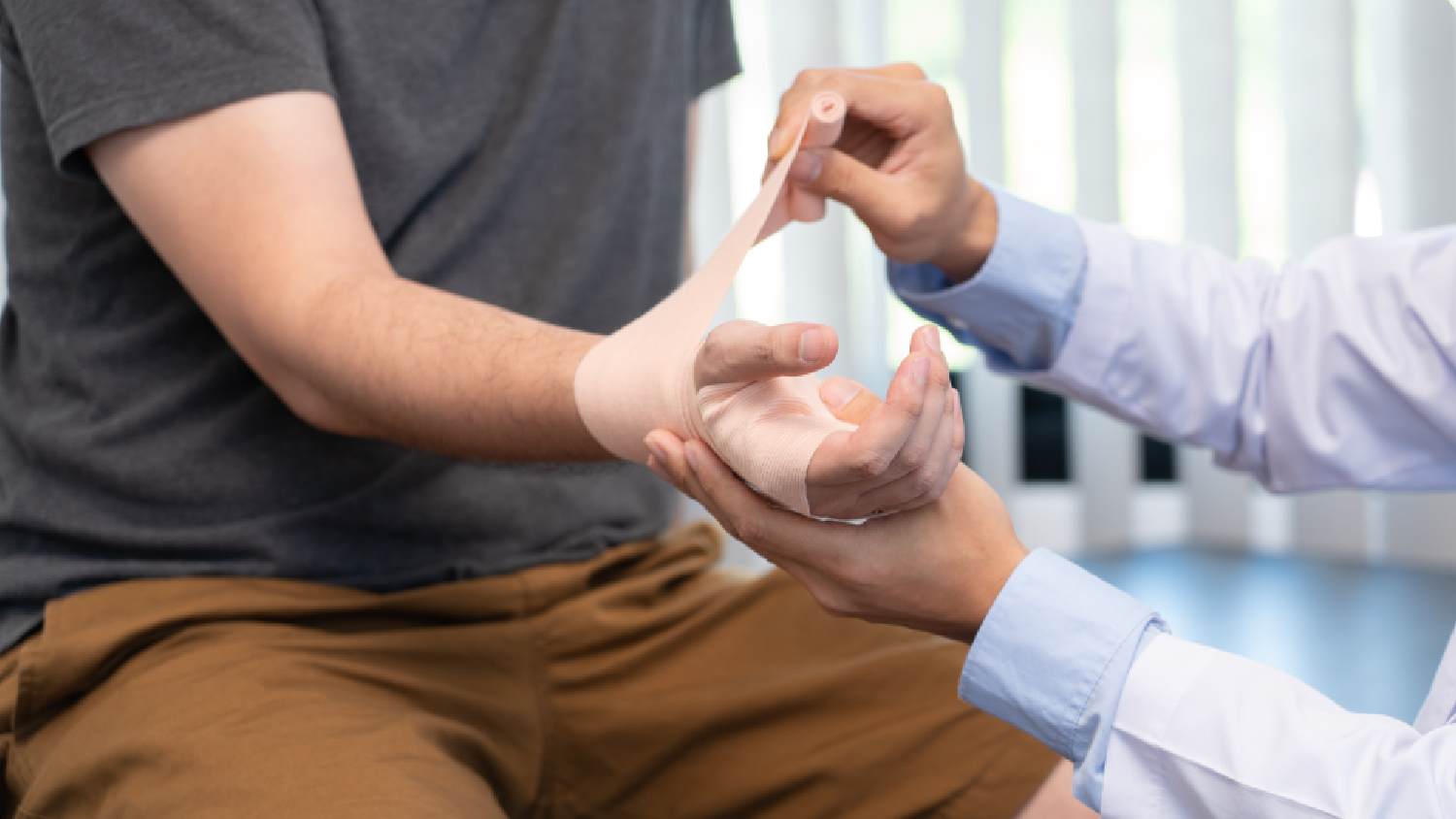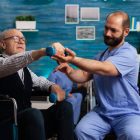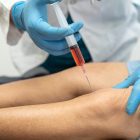Synopsis
The delicate structures of the hand and fingers often suffer from chronic conditions, making specialized therapeutic intervention essential. Effective physiotherapy for arthritis in hands focuses on reducing joint stiffness, managing pain, and preserving mobility for daily tasks. This guide explores the benefits of targeted physio for trigger finger protocols, which use specific gliding exercises to alleviate catching and locking symptoms. Finding a dedicated specialist for physiotherapy for hand fingers is key to a customized recovery plan. We detail how to address the underlying causes of discomfort through a focused physio for finger pain program. Utilizing specialized physical therapy for arthritis in hands is the non-invasive pathway to functional preservation. We also review essential physio exercises for finger injuries to promote healing and flexibility post-trauma. Consistent physiotherapy for arthritis in hands can significantly slow disease progression. Expert physio for trigger finger care minimizes the need for injections. Dedicated physiotherapy for hand fingers ensures all small joints are addressed. Meticulous physio for finger pain protocols provide lasting relief. Utilizing advanced physical therapy for arthritis in hands is crucial for functional capacity. Implementing targeted physio exercises for finger injuries accelerates recovery. Comprehensive physiotherapy for arthritis in hands and specialized physio for trigger finger are essential for upper limb function. Focused physiotherapy for hand fingers ensures optimal recovery, providing relief from chronic physio for finger pain. Expert physical therapy for arthritis in hands and structured physio exercises for finger injuries are critical for maintaining dexterity.
Table of Contents
- The Functional Importance of Hand and Finger Dexterity
- Comprehensive Physiotherapy for Arthritis in Hands- Goals and Methods
- Specialized Physio for Trigger Finger- Alleviating Catching Symptoms
- Treating Chronic Pain- Meticulous Physio for Finger Pain Protocols
- Essential Physical Therapy for Arthritis in Hands Techniques
- The Role of Physio Exercises for Finger Injuries in Recovery
- Preserving Function through Physiotherapy for Hand Fingers
- The Orthocure Advantage- Integrated Upper Extremity Care
- Partnering with Orthocure for Lasting Hand Health
The Functional Importance of Hand and Finger Dexterity
The human hand is an intricate biomechanical masterpiece, responsible for an astonishing range of fine motor tasks—from typing and writing to buttoning a shirt and preparing food. When chronic conditions like arthritis, trigger finger, or the aftermath of trauma compromise this dexterity, the impact on daily independence and quality of life is immediate and severe. Because the hands are used constantly, persistent discomfort from chronic physio for finger pain can be intensely frustrating and debilitating. Effective therapeutic intervention must be highly specialized, focusing on preserving the delicate balance of mobility and strength in the 27 small bones and numerous joints of the wrist and hand. The goal is always to provide long-term functional solutions.
Comprehensive Physiotherapy for Arthritis in Hands- Goals and Methods
Physiotherapy for arthritis in hands is the cornerstone of non-surgical management, focusing on mitigating pain, reducing stiffness, and slowing the progression of joint damage. The primary goal is to maintain or improve the patient’s functional grasp and pinch strength. Treatment involves gentle, sustained range-of-motion exercises to maintain joint flexibility, often combined with heat therapy (like paraffin wax baths) to soothe inflamed joints and reduce morning stiffness. Furthermore, specialized hand exercises are prescribed to strengthen the intrinsic muscles of the hand, which helps stabilize the joints and reduce stress, a key component of effective physical therapy for arthritis in hands .
Specialized Physio for Trigger Finger- Alleviating Catching Symptoms
Trigger finger (stenosing tenosynovitis) is a painful condition where a tendon sheath becomes inflamed, causing the finger to catch or lock. Specialized physio for trigger finger protocols are highly effective in alleviating these symptoms. Treatment involves gentle tendon gliding exercises, which help the inflamed tendon slide more smoothly through its sheath. Manual therapy is used to reduce swelling and improve localized circulation. A crucial part of physio for trigger finger intervention is education on activity modification and the use of splints during rest periods to prevent the finger from locking, allowing the inflamed area to recover.
What are the best gliding exercises for tendonitis in the fingers?
Treating Chronic Pain- Meticulous Physio for Finger Pain Protocols
Chronic physio for finger pain often indicates underlying issues such as nerve irritation, unaddressed trigger points, or the early stages of arthritis. Meticulous physio for finger pain protocols begin with a detailed assessment to differentiate between these potential causes. Treatment may involve nerve gliding exercises to improve nerve mobility through restricted pathways (like the carpal tunnel) or targeted manual therapy to release tight interossei muscles in the hand. For persistent joint pain, joint protection strategies are taught, ensuring the patient uses their larger joints when possible to reduce the load on the small, affected finger joints. This comprehensive approach is necessary for lasting relief.
Essential Physical Therapy for Arthritis in Hands Techniques
Effective physical therapy for arthritis in hands relies on a combination of essential techniques tailored to preserve joint health. These include joint protection education, teaching patients how to modify their grip and use adaptive equipment to minimize stress during daily tasks (e.g., using a jar opener or built-up handles). Manual therapy gently mobilizes restricted joints to improve fluid dynamics and reduce stiffness. Furthermore, the systematic approach of physical therapy for arthritis in hands utilizes customized strengthening and dexterity exercises—such as using putty or small objects—to maintain muscle tone and function around the compromised joints, a non-invasive way to enhance functional capacity.
The Role of Physio Exercises for Finger Injuries in Recovery
Following an injury or trauma, such as a sprain or fracture, the implementation of physio exercises for finger injuries is paramount for a full return to function. Immobilization, even for a short period, can cause significant stiffness in the small joints. Physio exercises for finger injuries begin with passive and active range-of-motion drills to prevent contractures and scar tissue formation. The program then progresses to building the grip and pinch strength necessary for functional tasks. Consistent adherence to these specific exercises is vital because residual stiffness in the hand can permanently impair dexterity and grip strength.
How long does it typically take to restore grip strength after a hand injury?
Preserving Function through Physiotherapy for Hand Fingers
Specialized physiotherapy for hand fingers focuses on maintaining the functional independence of the patient by addressing all 14 phalanges and their supporting structures. This involves a holistic view that includes the wrist and forearm, ensuring they are positioned optimally to support finger movement. The therapist uses manual techniques to ensure each small joint can move individually, a critical factor for fine motor control. The goal of physiotherapy for hand fingers is not just pain management but maximizing dexterity and strength through carefully progressed exercises that mimic daily tasks, ensuring the patient can continue to perform essential activities despite chronic conditions.
What are the best strengthening tools for intrinsic hand muscles?
The Orthocure Advantage- Integrated Upper Extremity Care
ORTHOCURE CLINICS AND GYMS provides integrated, specialized care for the hands, wrists, and elbows, offering advanced solutions for patients with arthritis, trauma, and chronic pain. Our unique 4 Point Protocol ensures that treatment for conditions like chronic physio for finger pain and physio for trigger finger is structurally corrective, focusing on the root cause rather than temporary symptom relief. Our team, which includes Orthopaedic Doctors and dedicated Physiotherapists specializing in the upper extremity, collaborates to deliver customized plans. We leverage advanced diagnostics and MedX, USA machines for precise muscle strengthening, which is crucial for supporting the joints affected by arthritis or recovering from trauma. This dedication to integrated, evidence-based physiotherapy for hand fingers ensures the highest standard of recovery.
How does Orthocure ensure structural correction for hand issues?
Partnering with Orthocure for Lasting Hand Health
The services offered by ORTHOCURE CLINICS AND GYMS encompass the full spectrum of upper extremity needs, from managing severe physiotherapy for arthritis in hands to guiding recovery after complex hand surgery. We provide expert physical therapy for arthritis in hands and structure customized protocols using targeted physio exercises for finger injuries . The ultimate USP of ORTHOCURE CLINICS AND GYMS is the commitment to maximizing functional dexterity and providing a durable solution to chronic discomfort. By choosing us, you gain a partner dedicated to restoring the delicate power and precision of your hands, ensuring you maintain independence and quality of life.
What specialized programs are available for seniors with hand arthritis?
FAQs
How does physiotherapy for arthritis in hands help manage chronic stiffness and pain?
Physiotherapy for arthritis in hands manages chronic stiffness and pain by employing techniques aimed at improving joint lubrication and reducing inflammation in the small joints. Treatment includes gentle, sustained range-of-motion exercises, often facilitated by heat therapy (like paraffin wax), to increase flexibility. A crucial part of the physical therapy for arthritis in hands approach is teaching joint protection strategies, where the patient learns how to modify grips and use adaptive devices to offload stressed joints during daily tasks. This systematic process helps maintain function and reduce reliance on medication, making it an essential component of finger joint pain treatment.
What are the core components of a specialized program for physio for trigger finger?
A specialized program for physio for trigger finger focuses on resolving the inflammation in the tendon sheath that causes the catching or locking sensation. The core components include gentle tendon gliding exercises, which help the tendon move smoothly through its restricted sheath, and manual therapy to reduce localized swelling. Specialists often prescribe rest or a splint during periods of sleep to prevent the finger from locking and reduce irritation. This targeted approach, a key part of effective finger joint pain treatment, often minimizes symptoms and prevents the need for injections or surgical release.
How is physiotherapy for hand fingers utilized after a significant wrist or forearm injury?
Physiotherapy for hand fingers is utilized after a wrist or forearm injury to actively combat the stiffness and loss of dexterity that result from prolonged immobilization. Even if the fingers were not fractured, they suffer from disuse. The therapist introduces specific physio exercises for finger injuries, such as putty exercises and individual finger mobilizations, to restore the full, independent movement of each digit. This comprehensive strategy ensures that functional tasks like gripping and pinching are regained, ultimately accelerating the full functional recovery of the entire upper extremity.
What techniques are used in physical therapy for arthritis in hands to preserve fine motor function?
Physical therapy for arthritis in hands preserves fine motor function by using specialized exercises that strengthen the intrinsic muscles of the hand and maintain the flexibility of the small joints. These techniques include working with therapeutic putty for pinch and grip strengthening, utilizing small objects for dexterity drills, and performing specific nerve gliding exercises. The therapist’s meticulous approach focuses on maintaining the delicate balance of mobility and strength, which is crucial for retaining independence in daily tasks like writing, fastening clothes, and handling small items, proving the value of this targeted finger joint pain treatment. |
Why is it crucial to implement physio exercises for finger injuries immediately after the immobilization period?
It is crucial to implement physio exercises for finger injuries immediately after the immobilization period because the small, delicate joints of the hand are highly prone to developing permanent stiffness (contractures) very quickly. Every day lost to inactivity in the post-immobilization phase is difficult to regain. The therapist’s guidance, which is essential for safe progression, ensures that the newly healing tissues are stretched in a controlled manner, preventing the formation of restrictive scar tissue and accelerating the patient’s return to complex functional movements, which is the ultimate goal of physiotherapy for hand fingers.
Can physio for finger pain that is non-arthritic still be treated effectively by a specialist?
Yes, physio for finger pain that is non-arthritic can be treated highly effectively by a specialist, as the discomfort often stems from easily correctable issues like trigger points, tendonitis from overuse, or mild nerve irritation. The specialist uses manual therapy to release muscle tension, soft tissue techniques to reduce inflammation around tendons, and corrective exercises to address functional deficits in the hand and wrist. This targeted approach, which is part of comprehensive physiotherapy for arthritis in hands protocols, ensures the root cause of the non-arthritic pain is identified and resolved, often much faster than chronic conditions.
How does consistent adherence to physio exercises for finger injuries impact long-term dexterity?
Consistent adherence to physio exercises for finger injuries has a profound impact on long-term dexterity by reinforcing the structural and neurological gains made in the clinic. The small muscles of the hand require frequent, controlled work to build endurance and strength, which is vital for maintaining fine motor control. Regular performance of the prescribed movements, which are integral to physiotherapy for hand fingers, ensures that corrected movement patterns become automatic. This consistency prevents the development of chronic stiffness or weakness, which are the main culprits behind residual functional loss after an injury.





